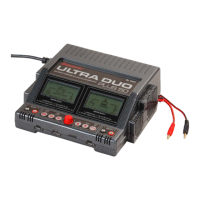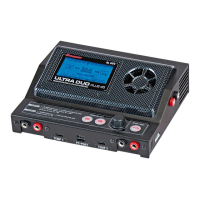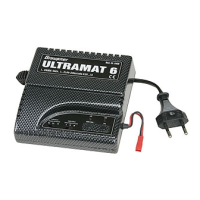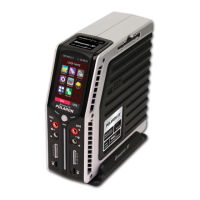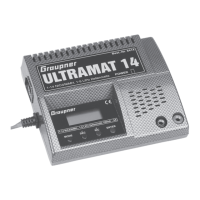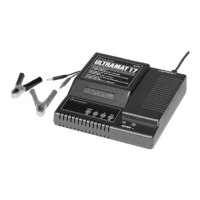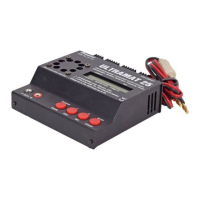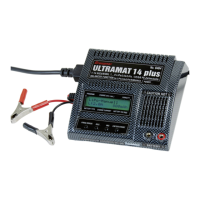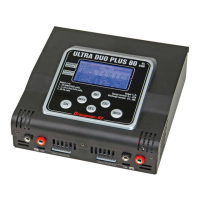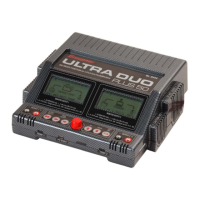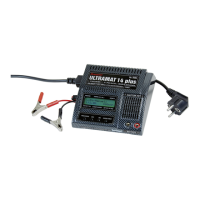Page 4/14
discharged.
• A Ni-Cd pack will normally be warm at the end of a rapid-charge process, but if you notice that one
cell of the pack is much hotter than the others, this may well indicate a fault in that cell. Such packs
could fail completely without warning, and should not be used again. Dispose of the battery safely,
preferably taking it to a toxic waste disposal centre.
• Ensure that all connectors and terminal clamps make good, sound contact. For example, if there is a
brief interruption due to an intermittent contact, the result is inevitably a malfunction such as a restart
of the charge process, which would result in the pack being massively overcharged.
• A common cause of malfunctions is the use of unsuitable charge leads. Since the charger is
incapable
of detecting the difference between a pack’s internal resistance, cable resistance and
connector transfer resistance, the first requirement if the charger is to work perfectly is that the
charge lead should be of adequate conductor cross-section and should be not be more than
30 cm long Good-quality connectors (gold-contact types) must be fitted to both ends.
• Charging transmitter batteries
A battery installed in a radio control transmitter can usually be recharged via the integral charge
socket which is fitted to the transmitter itself. Transmitter charge sockets generally include a diode
which prevents reverse current flow. This prevents damage to the transmitter electronics should the
charger be connected with reverse polarity, or if a short-circuit occurs between the bare ends of the
charge lead connectors. However, a transmitter battery protected in this way can only be charged by
the MULTILADER 7E on the outputs 2 or 4 - 7. Please read your transmitter operating instructions for
information on how to do this. The stated maximum charge current for the transmitter battery must
never
be exceeded. To avoid possible damage to the internal transmitter components due to
overheating and heat build-up, we recommend that the battery should be removed from the
transmitter’s battery compartment prior to charging. The transmitter must be set to „OFF“ and left in
that state for the whole period of the charge process.
Never
switch a radio control transmitter on when it is still connected to the battery charger. The
slightest interruption in the charge process may allow the charge voltage to rise to the point where it
immediately ruins the transmitter.
Never
attempt to carry out any battery discharge or battery maintenance programs via the
transmitter’s integral charge socket. The charge socket is not
suitable for this purpose.
When you set a particular current for charging, the charger only supplies that current if the value does
not exceed the unit’s technical capacity. If you set a charge current which the MULTILADER 7E
cannot deliver because it falls outside its technical limits, the unit automatically reduces the current to
the maximum possible value.
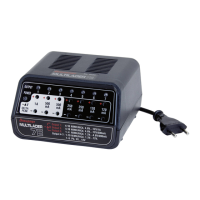
